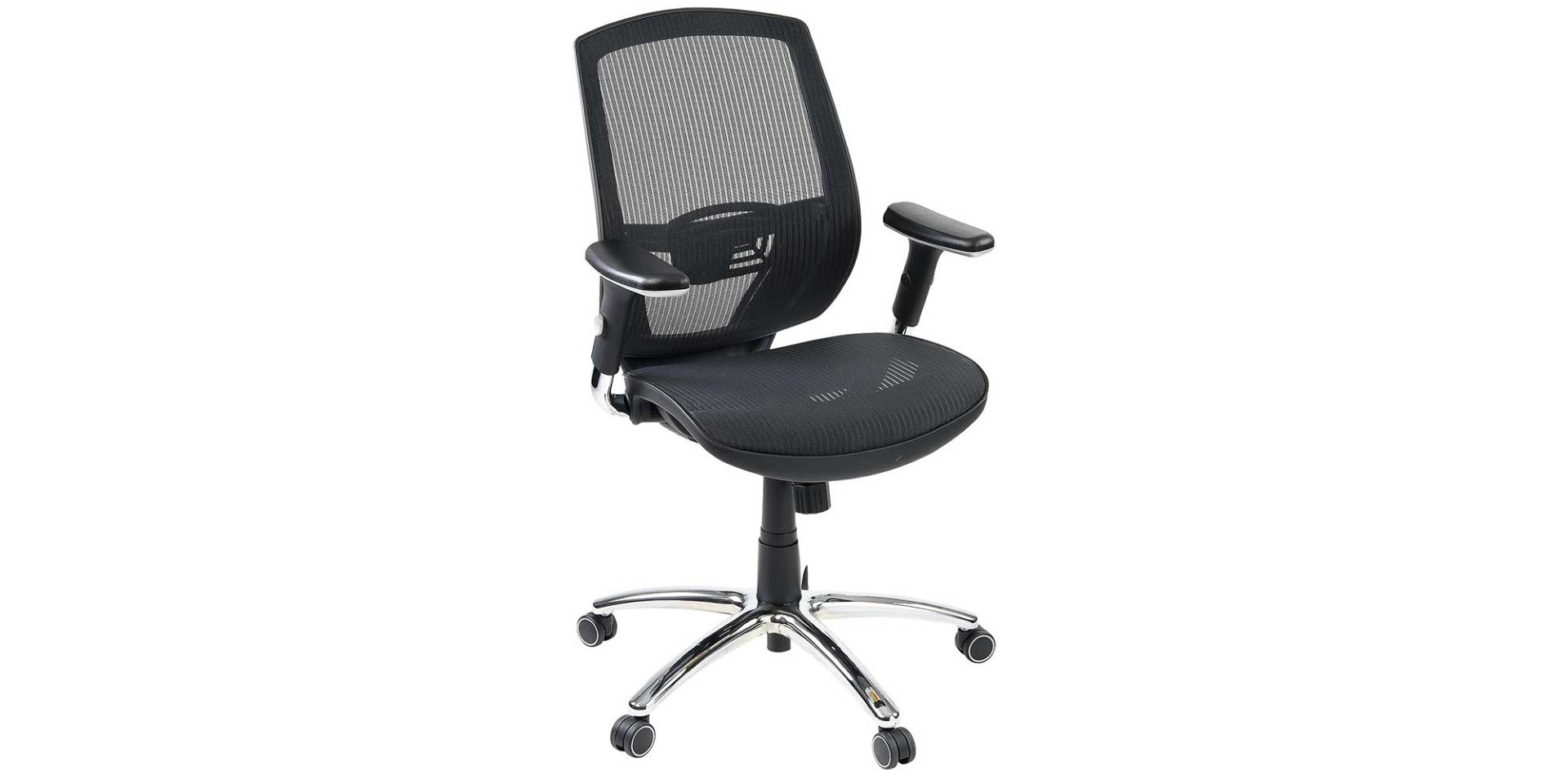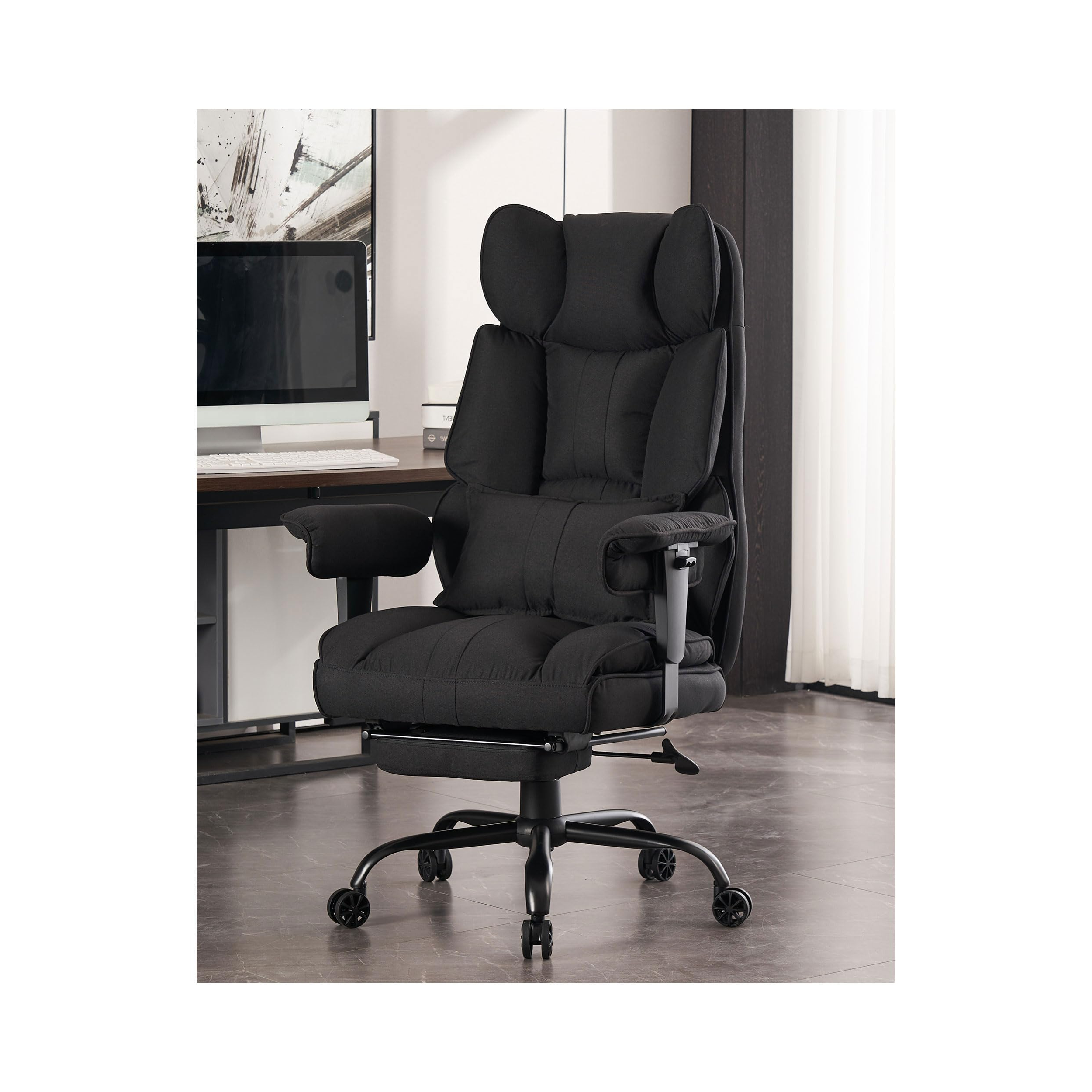Let’s be honest, finding an office chair that’s both comfortable and robust enough for larger frames can feel like a quest. We’ve all been there, sinking into a chair that creaks under pressure or leaves you with aches by midday. But it doesn’t have to be this way. The right office chair can transform your workday, boosting productivity and overall well-being. It’s about more than just a place to sit; it’s about investing in your comfort and health.
When you’re on the hunt for an office chair, especially if you carry a bit more weight, the usual options often fall short. They might look good, but the real test comes with sustained use. We’re talking about chairs that can handle significant weight capacities without compromising on ergonomics or durability. Finding one that ticks all the boxes – supportive, adjustable, and built to last – is crucial for anyone who spends hours at their desk. This isn’t just about avoiding discomfort; it’s about ensuring proper posture and preventing long-term strain.
Understanding Weight Capacity: The Foundation of Your Choice
This is probably the most critical factor. Standard office chairs often have weight limits around 200-250 pounds. For heavier individuals, this simply won’t cut it. You need to look for chairs specifically designed and tested for higher weight capacities. These are often labeled as ‘big and tall’ or ‘heavy-duty’ chairs, and they typically range from 300 pounds all the way up to 500 pounds or even more. Don’t guess or assume. Always check the manufacturer’s specifications. A chair that exceeds your weight needs by a good margin will generally be more durable and provide better support over time. Think of it like buying shoes; you need them to fit properly and provide the right kind of cushioning and support for your specific needs.
Beyond the Weight Limit: Key Features to Prioritize
Once you’ve identified chairs with adequate weight capacity, it’s time to dive into the features that will make a real difference.
Sturdy Frame and Base
Look for chairs with a robust frame, often made from steel or heavy-duty aluminum. The base should also be solid, usually a five-star design for stability, and made from strong materials. Plastic components can be a weak point, so opt for metal where possible, especially for the legs and armrests.
Seat Depth and Width
A comfortable seat is paramount. You want a seat that’s wide and deep enough to accommodate you without feeling cramped. Your thighs should be fully supported, with a few inches of space between the edge of the seat and the back of your knees. A waterfall edge, where the front of the seat curves downward, can also help reduce pressure on your legs and improve circulation.
Lumbar Support
Proper lumbar support is non-negotiable for most people, and even more so for those carrying extra weight, as it can alleviate strain on the lower back. Look for chairs with adjustable lumbar support, meaning you can move it up, down, and in or out to fit the natural curve of your spine. Some chairs have built-in, non-adjustable support, which might work for some but is less ideal if you need to fine-tune the placement.
Armrests
Adjustable armrests are a big plus. They should be able to move up and down, and sometimes in and out, so you can position them to support your forearms comfortably without shrugging your shoulders. Ensure they are sturdy and don’t wobble when you use them for support.
Material and Cushioning
Breathable materials like mesh can be great for keeping cool, but for heavier individuals, a well-padded seat is often more comfortable for extended periods. Look for high-density foam that won’t flatten out quickly. Some chairs offer reinforced padding specifically designed for greater weight.
Adjustability is King
Beyond lumbar and armrest adjustments, look for a good range of height adjustment for the seat. You should be able to place your feet flat on the floor with your knees at roughly a 90-degree angle. A tilt mechanism that allows you to recline and lock the chair in various positions can also provide welcome relief throughout the day.
The ‘Big and Tall’ Designation: What It Really Means
The ‘big and tall’ label is a good starting point, but it’s not a guarantee of quality or suitability. Manufacturers use this term to indicate chairs designed for individuals who are larger in stature, usually meaning taller and heavier than average. These chairs typically feature:
- Higher weight capacities: As mentioned, this is their primary selling point.
- Wider and deeper seats: To provide ample space and comfort.
- Taller backrests: To offer better support for taller torsos.
- Extended height adjustment ranges: To accommodate longer legs.
However, even within this category, there’s a wide range of quality and features. Always read reviews from other users who might share similar body types and needs. What one person finds comfortable, another might not. Don’t be afraid to do some digging. A reputable brand will often provide detailed dimensions and user testimonials.
Ergonomics: More Than Just a Buzzword
Ergonomics is all about designing furniture and tools to fit the human body and maximize efficiency and comfort. For an office chair, this means it should support your body’s natural alignment. For heavier individuals, this can be even more critical. A well-designed ergonomic chair will:
- Promote good posture: By providing the right support for your back, neck, and shoulders.
- Reduce pressure points: Distributing your weight evenly to avoid discomfort and improve circulation.
- Allow for easy adjustment: So you can customize it to your unique body shape and working style.
Think about how you sit. Do you tend to slouch? Do you lean forward? An ergonomic chair should encourage you to sit upright naturally, with your feet on the floor and your arms resting comfortably. It’s an investment in your long-term health and productivity. Ignoring ergonomics can lead to a host of issues, from back pain and neck strain to headaches and fatigue.
Durability and Construction: Investing for the Long Haul
When you’re looking for a chair that can withstand more weight, durability is key. This means paying attention to the materials and how the chair is constructed.
- Frame Material: Steel frames are generally the most robust.
- Base Material: A heavy-duty metal base is preferable to plastic.
- Casters (Wheels): Ensure the casters are designed for the type of flooring you have and can handle the weight. Some chairs come with reinforced casters.
- Upholstery: Look for durable fabrics that are resistant to wear and tear. High-density foam cushioning is also a sign of better quality and longevity.
Cheaper chairs might seem like a good deal initially, but they often use lower-quality materials that can break down quickly under stress. Investing in a well-built, durable chair from a reputable manufacturer will save you money and frustration in the long run. It’s about finding a balance between comfort, support, and a construction that’s built to last.
Where to Look and What to Ask
Finding the right chair might take a bit of searching. Start by looking at office supply stores that have a good selection of ‘big and tall’ or heavy-duty chairs. Online retailers are also a great resource, offering a wider variety and often better prices. However, buying online means you can’t try before you buy.
Tips for Shopping:
- Read Reviews: Pay close attention to reviews from individuals who mention their weight and height. Their experiences can be invaluable.
- Check Return Policies: Especially when buying online, ensure there’s a good return policy in case the chair doesn’t meet your expectations.
- Consider Warranties: A longer warranty often indicates the manufacturer’s confidence in their product’s durability.
- Don’t Be Afraid to Ask: If you’re in a physical store, ask sales associates about weight capacities and specific features. If buying online, check the FAQ section or contact customer service with your questions.
Remember, this is a personal purchase. What works for one person might not work for another. Take your time, do your research, and prioritize comfort and support above all else.
Choosing the best office chair for heavier individuals isn’t about finding a niche product; it’s about recognizing that comfort and support are universal needs. By focusing on weight capacity, sturdy construction, and ergonomic features like adjustable lumbar support and a comfortable seat, you can find a chair that truly enhances your workday. Don’t settle for less. A good chair is an investment in your productivity, your comfort, and most importantly, your long-term health. Take the time to research, compare, and find the perfect fit for your body and your workspace. Your back will definitely thank you.



![The 10 Best Office Chairs for Heavy People [400 lb Capacity & Up]](https://homeskoe.com/wp-content/uploads/2025/10/The-10-Best-Office-Chairs-for-Heavy-People-400-lb-Capacity-Up.jpg?width=480&f=jpg)

![Best Ergonomic Office Chair with 400 lb Weight Capacity [Tested]](https://homeskoe.com/wp-content/uploads/2025/10/snapklik-com-efomao-fabric-office-chair-big-and-tall-office-chair-throughout-choosing-the-best-office-chair-for-heavy-individuals.jpg?width=480&f=jpg)









